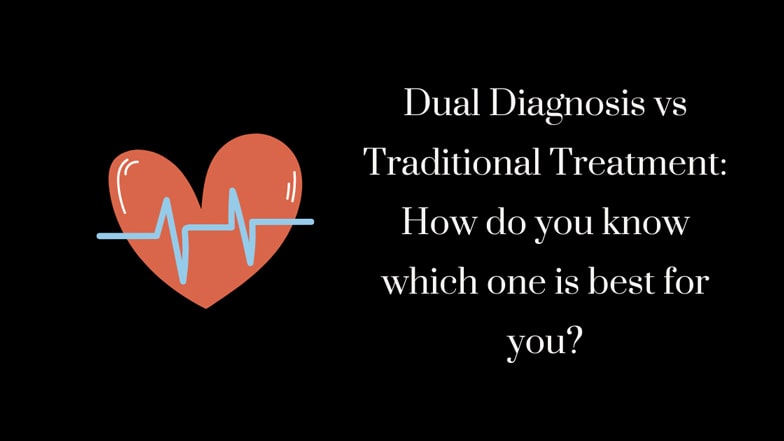Acquiring treatment for substance use disorder is an important step toward recovery, but it often does come with its complications and challenges. This is especially the case when there seems to be a concurrence of mental health issues and substance abuse. Knowing the causal effect of both an understanding which treatment plan to take then becomes of paramount importance to achieve the desired recovery results.
The two most prevalent treatment plans in such scenarios are dual diagnosis and traditional treatment methods. A dual diagnosis is given when there is evidence of a struggle with both substance use disorder and mental illness at the same time. Traditional treatments, on the other hand, take on treating one at a time: either a mental illness or a substance use disorder depending on which is most prevalent.
To determine whether to use a dual diagnosis treatment or traditional treatment, let us look at some factors to consider:
Symptoms for dual diagnosis
Having a dual diagnosis means that there is an occurrence of a mental illness and substance use disorder. There are many occurrences and diagnosis combinations in this case and the symptoms may vary greatly. Some of the most common symptoms to look out for in you or your loved ones may include:
- Inability to control the use of substances: despite being fully aware of the negative consequences of substance abuse such as job loss, degraded health, and destroyed relationships, it is difficult to control substance abuse occurrences.
- Erratic behavior changes: one of the most common indicators of dual diagnosis is unexpected behavioral changes that include spouts of anger, increased irritability, and antisocial tendencies. The change is a shift of personality from who they used to be previously.
- Intense withdrawal symptoms: when denied access to the substance, there is intense withdrawal and more of it is needed to achieve the same state of euphoria. Trying to quit may repeatedly be followed by intense relapses.
- Having compulsive behavior: this may be seen in engaging in behavior that is harmful to self or others such as stealing, lying, or performing poorly in school or at work.
- Having delusional experiences: there are many instances of experiencing hallucinations and other sensory experiences that others do not have.
- Constant feelings of lowness: there will be feelings of desperation, hopelessness, and depression that continue for weeks. The tendency to isolate and turn away from social groups is high.
Dual diagnosis treatment
To ascertain the need for dual diagnosis treatment, it is always best to go to a facility with a dual diagnosis treatment plan and have a full evaluation for the best treatment plans. When a medical professional conducts a thorough psychoanalytic evaluation, then you can have your diagnosis and get into a treatment plan that is best for you.
The advantage of using a dual diagnosis treatment plan is that it helps break the cycle of both conditions by treating both conditions at once. Trying to deal with one at a time if a dual diagnosis has already been made often proves futile. This is because an untreated mental illness can lead to using substances as coping mechanisms and an untreated substance use disorder can lead to developing a mental illness.
Traditional treatment
Once an evaluation has been made and it is seen that only one of the following: a substance abuse disorder or a mental illness is present, then treatment on that can begin. This means that you can now enroll in a treatment plan that can help combat the particular disorder or mental illness in isolation. Traditional treatment is best if there is no causal relationship between the two choices.
Conclusion
Making the right treatment choice between traditional treatment and dual diagnosis treatment is important to your recovery journey. As you pick the best treatment plan to use, be sure to choose one that addresses your specific needs and guarantees the best results. This journey is best walked with caring partners and loving friends and a good treatment center guarantees just that.
